Up to 50% Clearance Clothing & Footwear + Extra 25% Off REI Outlet.

Right off the bat, before we dive into this guide to Bruges, let’s make sure we get the pronunciation of this Belgian city correct, on the off-chance you haven’t seen the Movie In Bruges. It’s pronounced broozsh. Or broo-guh, if you’re using the same name for the city as the locals do, which I could never quite wrap my head around. Why don’t we all call cities by the same name? I get that we probably have to spell them differently, especially in languages without Roman alphabets like Chinese or Russian, but why don’t we pronounce them the same? Why is it broozsh in English but broo-guh in Dutch? Why is it Florence for us but Firenze for Italians? Why do Australians allow Americans to mispronounce Melbourne (it’s Melbuhn, thanks very much)? And by an opposing twist in logic, why does it always seem to be New York or Chicago no matter what language you speak?
But I’m getting off topic. You want a guide to Bruges. Whether you loved or hated the movie where Colin Ferrel pulls off a magnificent Irish accent, this is a city you should visit (whether or not you want to pay for the “privilege” of climbing 366 stairs to reach the top of the famous belfry). It’s a beautiful city of circular canals and medieval architecture and it was definitely one of the loveliest stops on our two-month European excursion, hands down.
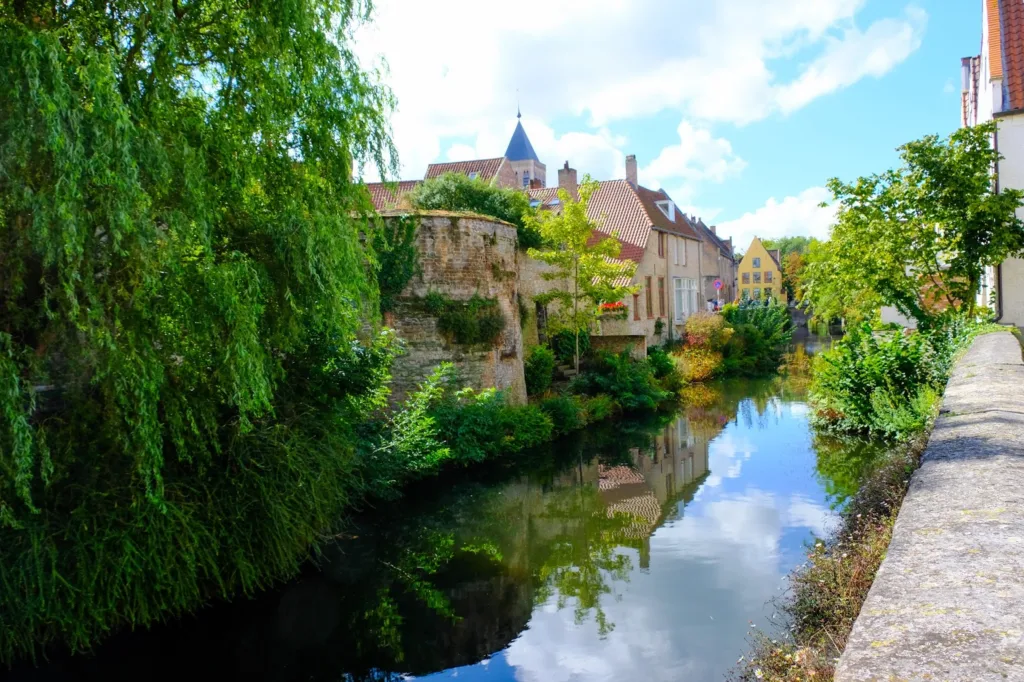
But Amsterdam has canals! You say. Bah. They don’t hold a candle to Bruges. There’s just something about verdant weeping willows dangling over quiet waterways, colorful bikes resting against ancient stone buildings, Gothic spires jutting up into the sky from the tops of churches hundreds of years old, that makes it terribly inviting. Add to it dozens of canal-side restaurants and cafes, swans lazily meandering around the park, and a history brimming with trickery and intrigue, and you’ve got yourself a pretty interesting place.
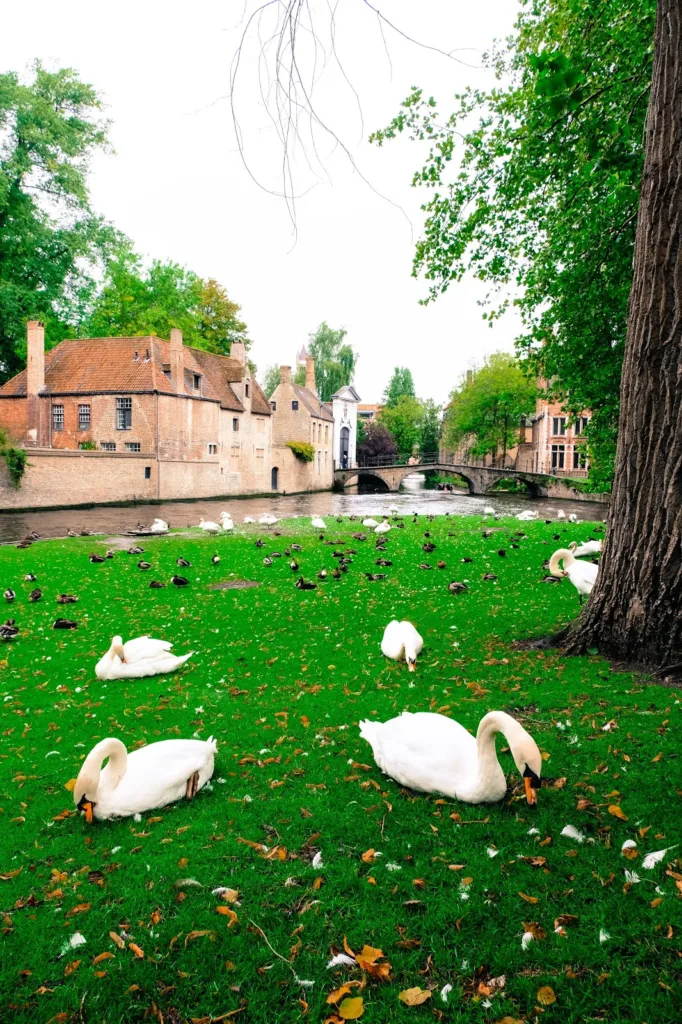
However, it is a compact place, and the two and a half days we spent there were perhaps half a day too long. If you’re not taking every meal at one of those canal-side cafes or paying for entry to the handful of museums in the old town (like the Archeological Museum, €4, or quirky Fries Museum, €7), you’re going to burn through the sites pretty fast. But a single day certainly isn’t long enough to be able to relax and take in the calm of the city.
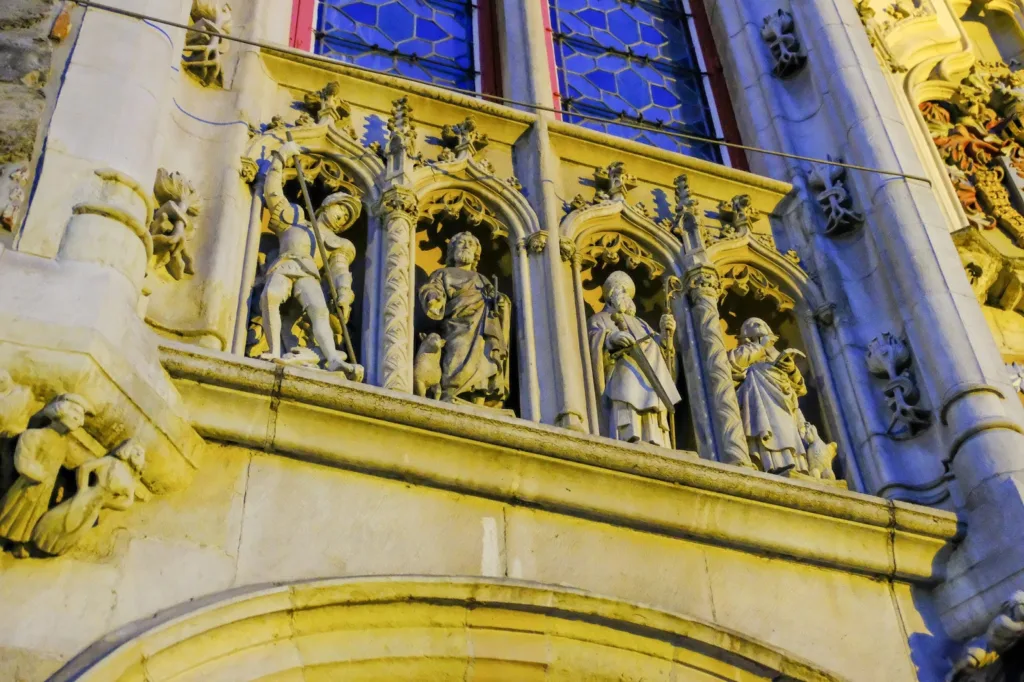
We arrived early via BlaBla Car from Brussels and hit the ground running, as we do. We stashed our bags in the hostel locker room (sans rain jackets and umbrella, which we would need on and off all day), and before we did anything else, sat down with a map and a coffee (instant, of course, with a carton of soy milk that probably should have been refrigerated, but oh well, we’re still alive). We circled some interesting attractions, noted the time of the next free walking tour, then went into the center to join up with that group.
We learned some of the city’s history, about the blood of Jesus, which is on display in a magic vial in The Basilica of the Holy Blood, saw the aforementioned magic vial of holy blood, and nodded at several sites used in the filming of In Bruges. Interesting. We also took a brief pit stop at one of the only two breweries left in old town where just about everybody got a beer but us. I’m used to this because I don’t drink, but Josh squirmed a bit at not partaking with everyone else. Reason being, 1.) we had been warned not to pay over €3 for a beer or we were being ripped off and 2.) I don’t appreciate being coerced into spending money, like, say, on a free tour where they parade everyone into a bar and expect you to drop €3.60 on a drink when, it seems to me, like everyone on a free tour would not be keen to do. (Don’t worry, Josh tried that same beer for .60 less at another bar not on the tourist trail. We’re clever like that.)
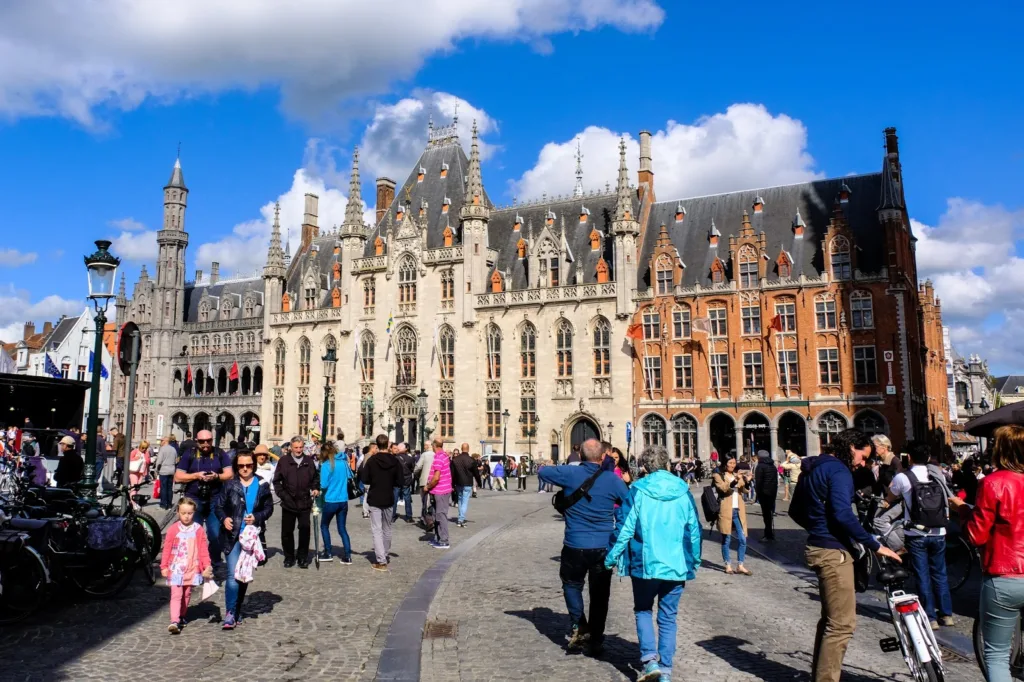
After that, it was just a matter of retracing our steps to revisit the more tantalizing points of interest from the tour over the next two days. We discovered we would not be mounting the famous belfry as it cost €10 per person to do so and I do not pay to climb stairs for 15 minutes. If anything, they should be paying me for all that physical exertion. Instead, we meandered through one-lane streets with narrow sidewalks, not consulting a map, accepting the notion that we would get lost. We peeked into art galleries, interesting local home goods stores, stumbled upon a small hidden park, Hof De Jonghe, that contained apple trees and sheep, of all things. We crossed bridges, took photos, stared up at windmills, visited the garden of the original feminists, the Begijnhof, and saw the country’s oldest bar, Cafe Vlissinghe.
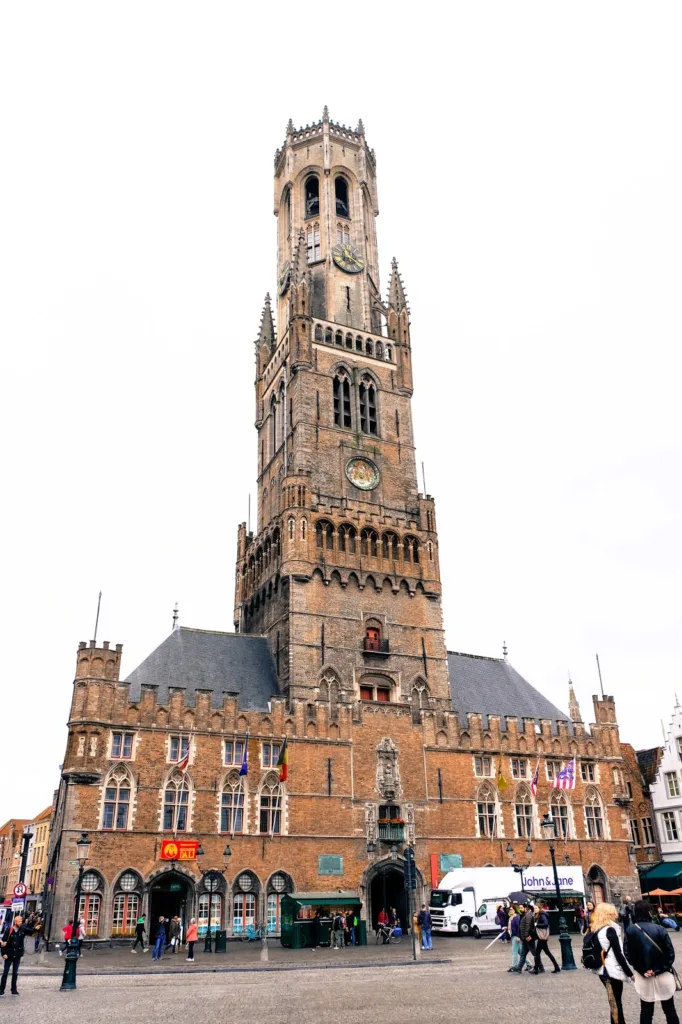
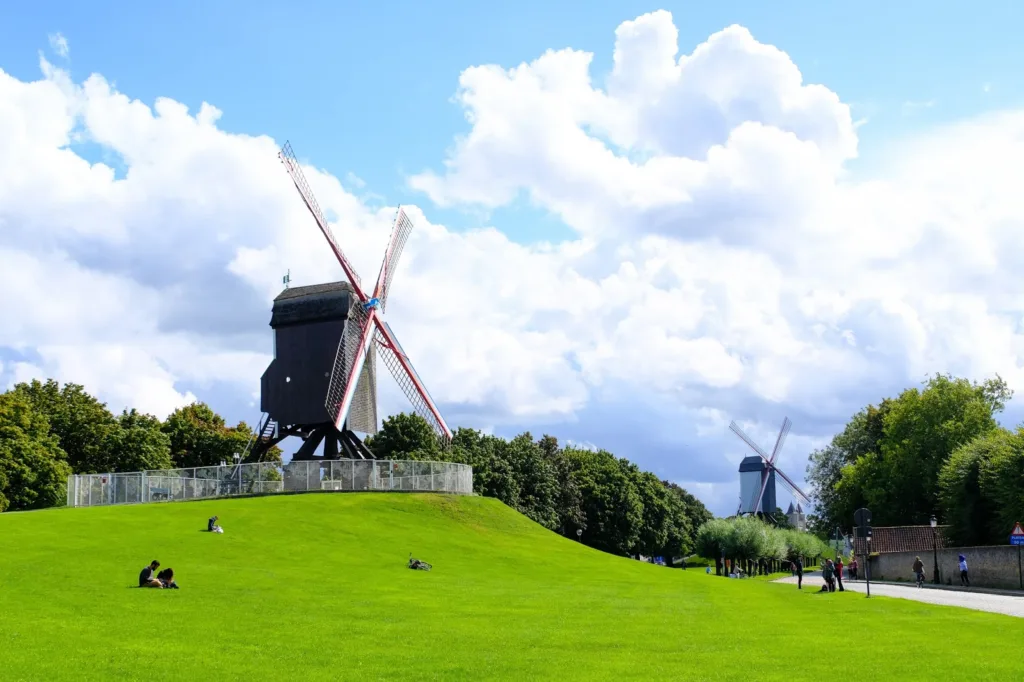
And ate. But not well. I can’t say I was surprised, but I was disappointed at the state (and price) of vegan food in the city. I mean, it is a pretty small place, but after the lack of cheap, original offerings in Brussels I was hoping for something better. All we found was Vero Caffe that made a tasty soy latte and had one kind of vegan cake.
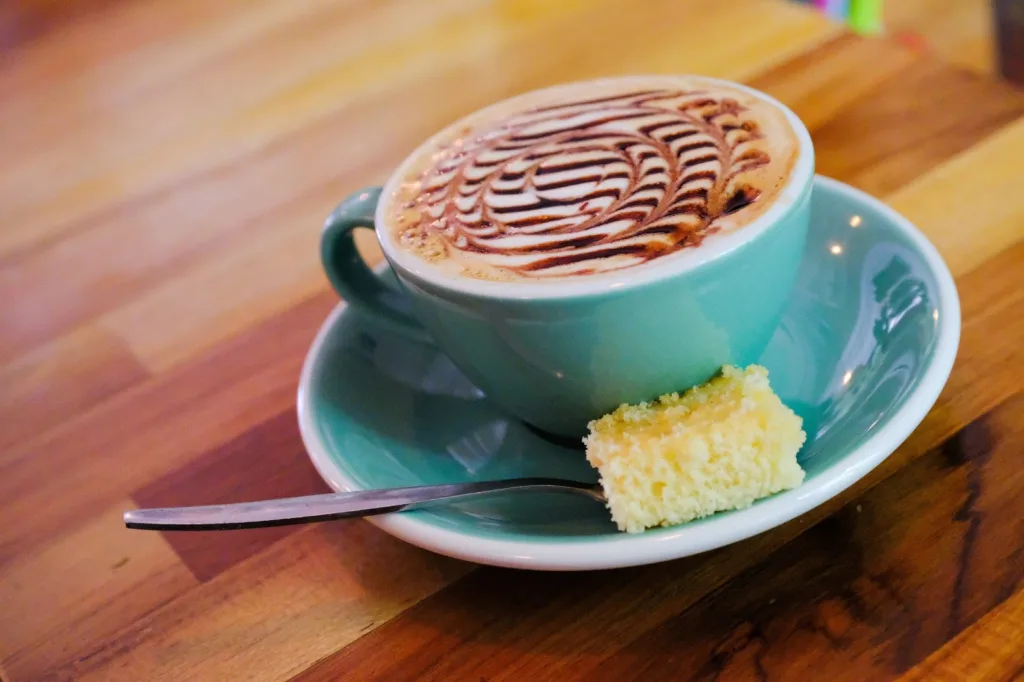
Of course, this is really unfair to Bruges. There were other options, but they were pricey or uninspiring (think falafel) and as we were still feeling the price gouging of Iceland from not even a week before, we were loath to pay €25 for a meal. So the supermarket it was. Fortunately, we managed to get our hands on staples like bread, fruit, muesli and hummus, though even finding tofu or ramen was tricky. Needless to say, we put the hostel microwave to work every night and mostly ate sandwiches for lunch. Classic Terradrift.
We opted for another free tour at night that claimed to show a “different” side of Bruges. I’m not sure how different it was, but it wasn’t the same as the afternoon tour and you got free beer at the end, so what’s to lose? Actually, Josh got several free beers in Bruges. Both tours offered tickets for free house beers at local bars and, as I don’t drink, he got two each time. One was a Trappist beer that he said was much better than the overpriced brew they market to tourists and was served in Le Trappiste, an underground tavern that had Josh planning our own future medieval cave in our next tiny house. The other was actually from our own hostel bar at St. Christopher’s Inn at the Bauhaus (which had extraordinarily cheap beer, especially at happy hour), so that was convenient. We got to hang out front with some of the other folks on the tour, one of whom had shared a room with us one night, the other whom convinced us that we absolutely must go to Romania this trip (which we did end up planning). Of all the things I often don’t like about hostels, the ones that do it right have this in common: they make it very difficult not to socialize with other travelers.
And I do like to socialize with other travelers.
But we also like it to just be the two of us. So we didn’t invite anyone to join us when we went to 27 B Flat Bar for an evening of live Chicago blues that was simply divine. And free. Minus the cost of the cheapest beer on the menu. Because Josh. Wandering through the various markets on weekend mornings is also free and might offer an opportunity for a cheap snack, so hit up one of those, too. And don’t miss the windmills standing on the edge of the old town, right along the canal. Those are free to gaze upon, but if you want to go into the one still in operation as a mill, it’ll cost you a couple of euros.
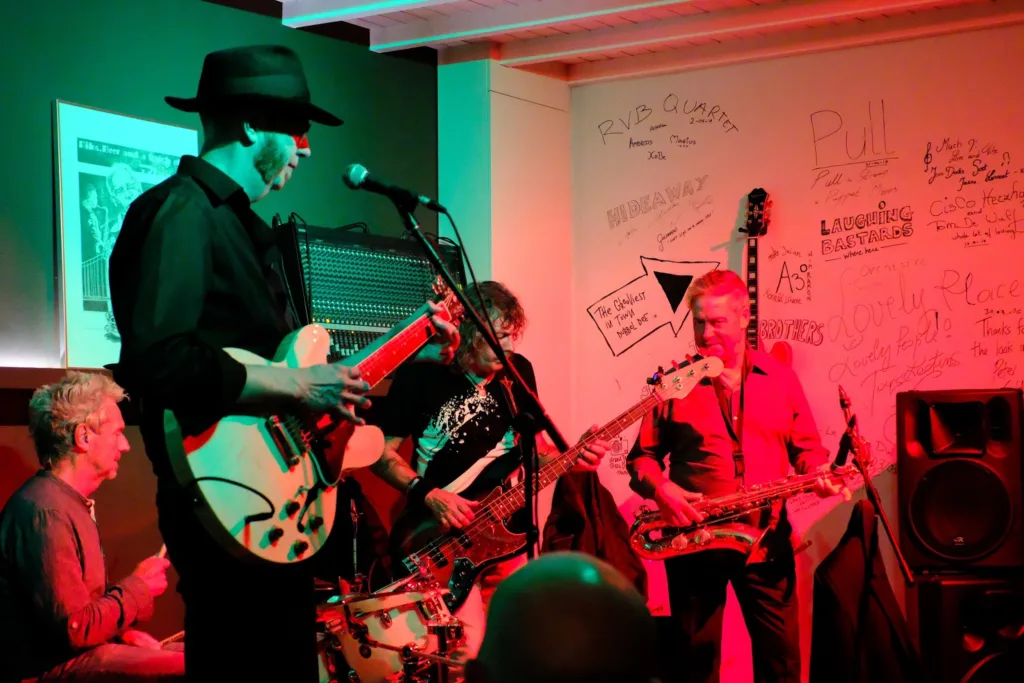
Would we go back to Bruges? Definitely. Maybe in the summer next time so we don’t get rained on every day. Was it touristy? Yeah, but not too bad. However, next time I’ll plan ahead and bring a stockpile of vegan staples along.
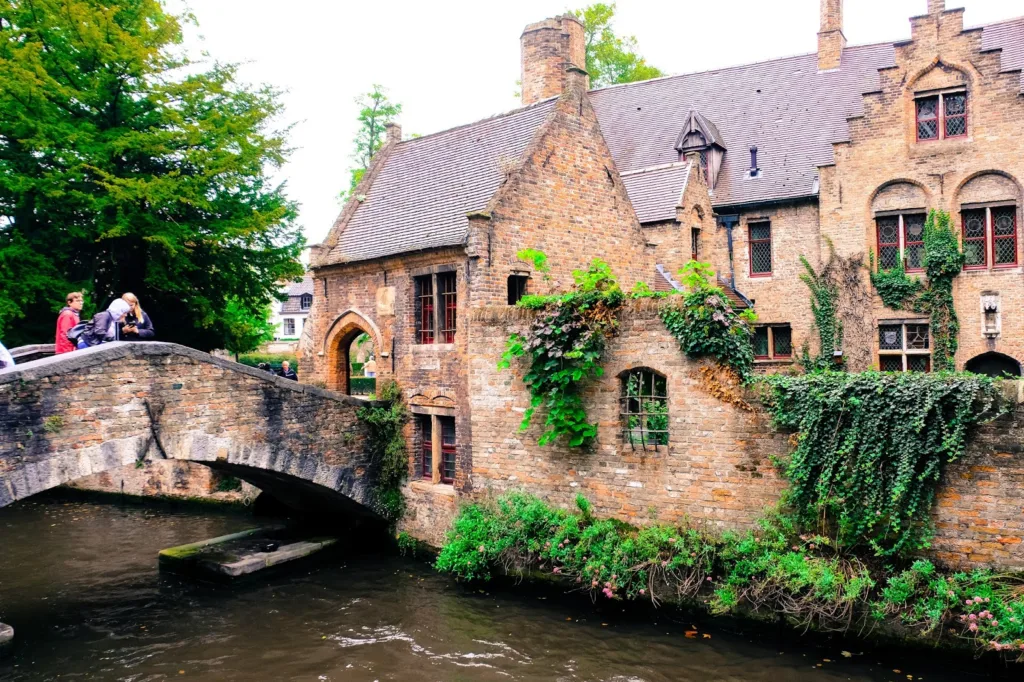
Tips for Visiting Bruges
- The city is extremely walkable and public transit is available but hardly necessary. Bring your comfy walking shoes!
- The cobblestone streets can be a pain, especially for rolling suitcases. Backpacks or duffles are your best bet.
- Bruges is sometimes referred to the “Venice of the North.” If you fancy a motorized boat trip on the canal, it’ll only set you back about €9, a lot less than in Venice.
- Shops and many restaurants, including supermarkets, often close early (like 5-7:00) and don’t open at all on Sunday, so plan accordingly.
- If you’re under 26, you can get into many museums for a lot less; sometimes for as little as €1.50.
- If you want locally made Belgian chocolate, look for the word “handmade” on the door or inside the shop. There are scores of them.
- Beer is cheap in bars, but it’s even cheaper in the supermarket. Stock up there and you’ll pay something like € .80 for a can or bottle.
- Revisit the city at night; it’s just as beautiful as during the day.
- The main language spoken is Flemish (similar to Dutch), but just about everyone speaks English, too.
Wander on!
Alisha is a freelance outdoor journalist and photographer based in Ogden, UT. She loves backpacking, hiking, mountain biking, kayaking and snowboarding (even though she’s terrible at it). She’s also pretty sure she’s addicted to coffee. alishamcdarris.com
